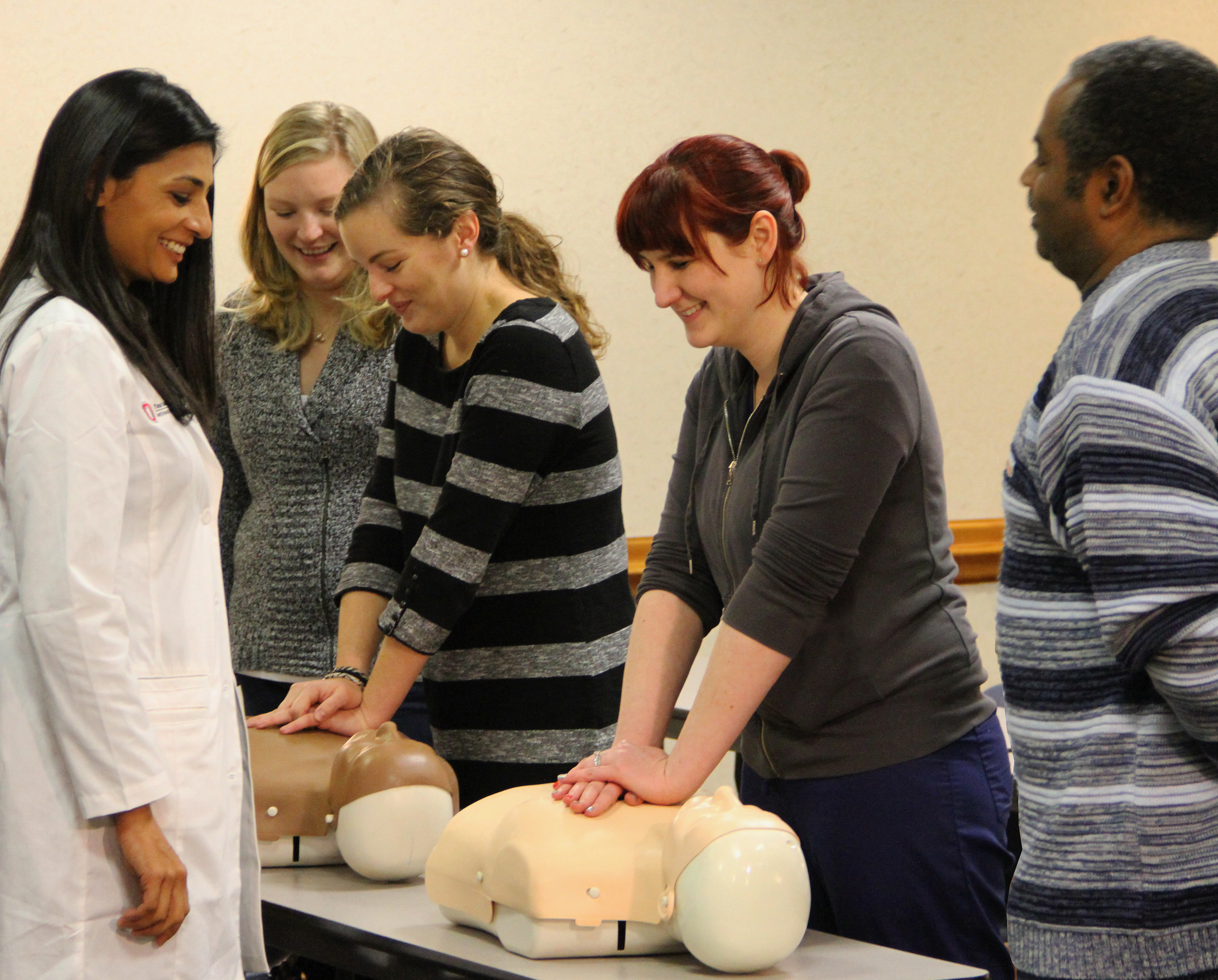February 2, 2015
 COLUMBUS, Ohio – When a person’s heart stops beating, every second counts. However, bystanders often fear giving cardiopulmonary resuscitation (CPR) to a victim.
COLUMBUS, Ohio – When a person’s heart stops beating, every second counts. However, bystanders often fear giving cardiopulmonary resuscitation (CPR) to a victim.
Dr. Ruchika Husa, a cardiologist at The Ohio State University Wexner Medical Center, studies resuscitation science and also teaches CPR. She says there are many reasons people freeze or panic when a person collapses.
“A majority of people aren’t comfortable doing mouth-to-mouth, providing breaths for the victim. They also say the old CPR instructions were too complicated to remember, especially during a life-threatening event. They’re afraid of doing it wrong and doing more harm than good,” Husa said. “The fact is some CPR is better than no CPR.”
The American Heart Association (AHA) reports that, each year, 424,000 people suffer sudden cardiac arrest, most often at home or work. About 4 out of 10 victims get CPR from a bystander until help arrives, which triples the person’s chance for survival.
To improve the odds that bystander CPR will be performed, the AHA updated its guidelines in 2008 for teens and adults in sudden cardiac arrest to just two simple steps: Call 911, then push hard and fast on the breastbone (sternum) in the center of the chest. It’s called Hands-Only CPR.
“People come to the class and are relieved they don’t have to do mouth-to-mouth. Simplifying bystander CPR to just two easy steps helps people feel more confident in their ability to remember what to do in an emergency,” Husa said.
In a 2013 survey published in Resuscitation, about 20 percent of people reported knowing about the simpler method. Yet more than 75 percent said they would be comfortable performing compression-only CPR on a stranger.
Husa said the willingness and increased confidence has opened the door for more people to get trained – and raised a lot of interesting questions.
“Many people ask if this is as effective as conventional CPR with mouth-to-mouth. In general, yes, it is. There are times when conventional CPR should be used, such as for babies and children, but for teens and adults the first few minutes of hands only CPR is as effective as conventional CPR,” Husa said.
Additionally, Husa says any adult or teen in sudden cardiac arrest can get bystander CPR, even those who have implanted heart devices such as pacemakers and monitors, and women who are pregnant.
 Husa reminds class participants, when performing CPR, lead with the weaker hand, placing the dominant hand on top with fingers laced. Compressions should be hard and fast, about 100 times per minute. The AHA suggests pushing to the beat of “Stayin Alive” by the Bee Gees.
Husa reminds class participants, when performing CPR, lead with the weaker hand, placing the dominant hand on top with fingers laced. Compressions should be hard and fast, about 100 times per minute. The AHA suggests pushing to the beat of “Stayin Alive” by the Bee Gees.
“I’ve been asked, ‘Could I break someone’s rib?’ and I say, quite possibly, yes. Good quality compressions should move the chest about two inches and it’s hard work. The important thing is the victim needs to survive first. Ribs will heal,” Husa said.
In conjunction with American Heart Month, a Hands-Only CPR demonstration will take place at Ohio State’s Richard M. Ross Heart Hospital lobby from 11 a.m. to 1 p.m. on February 18.

